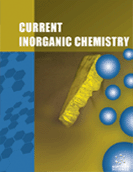Abstract
Background: Porous coordination polymers (PCPs) are widely used as sorbents and catalysts for various processes. However, in the majority of cases the researchers can not predict the structure (and, as a consequence, the properties) of a new coordination polymer. The coordination polymer for special application is usually selected from the library of reported and characterized compounds, and then its properties are tested. This review deals with design of PCPs for the specific sorption, separation or catalytic applications.
Objectives: The objective of the review was to analyze and summarize the cases when porous coordination polymers were specially designed for adsorption of certain substrates or catalysis of certain reaction.
Methods: The review summarized the results, obtained by X-ray structure determination, measurements of different compounds adsorption from gaseous or liquid phase, and studies of catalytic and electrocatalytic properties. Catalysis of organic reaction in solutions at presence of solid PCPs is considered. Electrocatalytic activity was evaluated by cyclic voltammetry or by preparative electrolysis with solid electrodes, modified by film of PCP.
Results: The approaches for creation of PCPs with desired sorption and catalytic properties were based on selection of the specific fragments, functional groups or units with desired properties before synthesis of the PCP, followed by creation of the PCP containing such specially designed units, or adjustment of the PCP's structure in order to satisfy certain requirement. Sorption selectivity could be adjusted by tuning of pore size in the PCP by variation of the ligand in isoreticular row of the compounds; introduction of the functional groups, which have different binding energy in respect to various substrates or tuning of the PCP's framework flexibility by appropriate choice of the ligands. Desired catalytic activity could be achieved by use of the fragments, groups or units, which showed desired properties in the separate experiments before their incorporation in the PCP.
Conclusion: There are several methods for achievement of the target selectivity or catalytic activity, such as pre-synthetic choice or post-synthetic incorporation of functional groups, favorable for desired substrate binding, or active sites for desired catalytic or electrocatalytic reactions. Despite seeming difference of separation and catalytic applications, these methods are quite similar.
Keywords: Porous coordination polymers, metal-organic frameworks, selective sorption, catalysis, electrocatalysis, design, post-synthetic modification.
 43
43 4
4 1
1


